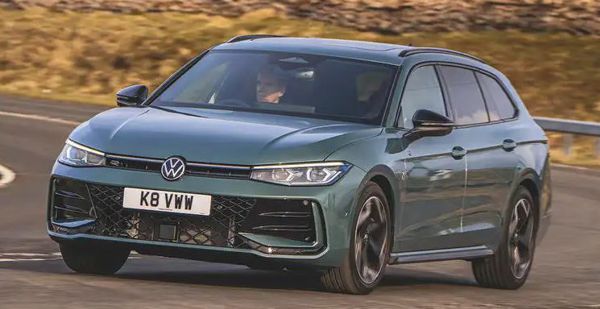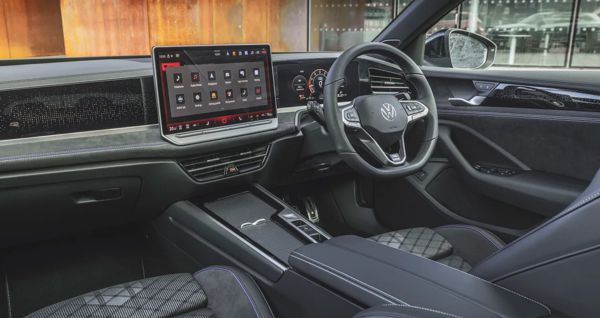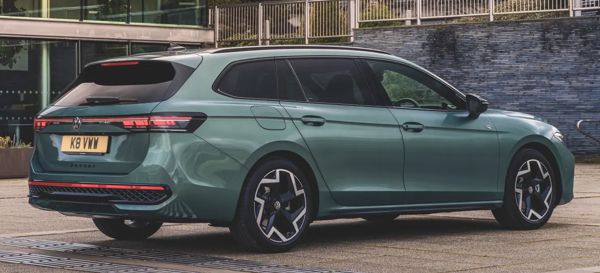Published
on 6
May 2024
|
All rights reserved.
|
|
|
 |
|
This
is the first Passat not developed by Volkswagen itself.
|
|
The future of Volkswagen
Passat has been in doubt for some time. Volkswagen brand has turned its
resources into the ID range of electric cars, including the ID.7 which
was reckoned to replace the long-serving Passat nameplate. Somehow, it
turned out to be a bit more complicated. The ID.7 is half a class
larger and significantly more expensive than the outgoing Passat.
Moreover, not all buyers could put up with the limited range and slow
charging of electric cars, so the ID.7 is impossible to completely
replace the Passat. If Volkswagen presses on, it could risk losing a
big chunk of customers to rivals like Stellantis or BMW, whose cars
offer both ICE and electric options. On the other hand, developing a
new generation Passat alongside the ID.7 could be too expensive,
because the new Passat will certainly sell in much lower volume than in
the past. Eventually, a solution is found: build a new Passat from
Skoda Superb.
The big Skoda has always been linked to previous Passats, as they share
platforms. However, their relationship gets closer than ever in this
generation. In fact, you might even call them twins. The new Passat
and Superb are basically the same car in different clothes. They were
developed together and entirely by Skoda in a program called Beta+.
They are built on the same production line in Bratislava, Slovakia. If
you compare their photos carefully, you will find they share not only
all the hard points but also doors and windows, leaving only lights,
grilles, bumpers etc. to differ them. In short, much like the
badge-engineering job General Motors did to its various brands until
its bankruptcy.
 |
|
Spacious
cabin is let down by lack of physical switches, unlike Skoda.
|
|
Inside, the Passat gets a different dashboard and trims, but
disappointingly, not quite as stylish or upmarket as the Skoda. It also
loses the latter’s physical rotary switches, so everything has to be
accessed through touchscreen or touch slider, much like ID cars. You
can opt for larger (15-inch) touchscreen and pneumatic massaging
seats on the Volkswagen, but otherwise it does not show any superiority
over the Czech car. Predictably, cabin space is on a par with Skoda, so
even taller passengers can enjoy good leg and head room in the second
row.
Perhaps anticipating lower sales volume, the new Passat is available in
only wagon form called “Variant”, unlike the Skoda which is available
in both wagon and hatchback. It makes sense, because the ID.7 is on the
contrary, offering only hatchback form but not station wagon. However,
it is still sad to see the demise of Passat sedan.
Luggage volume is exactly the same as its Czech sibling: a
class-leading 690 liters with rear seats in place or 1920 liters with
them folded. The former figure is 40 liters more than the last
generation Passat Variant.
 |
|
Superb
refinement and comfort accompanied with decent handling, but most
versions aren't fast.
|
|
Powertrain is basically the same as those of Skoda, including 150hp 1.5
eTSI mild-hybrid, 2.0TSI with 204hp or 265hp (the latter mates with
4motion) and 2.0TDI diesel with either 150 or 193hp. Plug-in hybrid
model combines 1.5TSI engine with electric motor and 25.7kWh battery
which offers more than 100 km of zero-emission range on WLTP cycles but
at the expense of some luggage space. While Skoda gets only 204hp, the
Passat PHEV lets you choose between 204hp or 272hp states of tune. That
said, most private buyers are likely to opt for the entry-level 1.5
eTSI, which is quite refined and barely powerful enough for Autobahn
work.
Like Skoda, the chassis tuning favours comfort over driver appeal. With
DCC Pro adaptive dampers, which can vary compression and rebound rate
independently, the ride is noticeably smoother than the old car. The
cabin is much quieter, too, displaying excellent isolation from engine,
wind and road noise. The car’s 0.25 Cd helps.
Meanwhile, its handling is not too sloppy. It offers strong grip and
high-speed stability. The steering is well weighted and accurate, if
not sharp or feelsome. Throttle steer is out of question, of course,
but the car’s handling is consistent and predictable, accompanied with
light controls to make life easy in everyday driving.
However, 10 years have passed since the introduction of the last
Passat. While Volkswagen – well, Skoda – has moved the game on, the
progress it has taken is not as big as we had hoped for. At least, it
won’t make you wow and consider as a contender of next year’s COTY.
|
Verdict:     |
|
|
|
|
|
|
|
|
|
|
Passat 1.5TSI
|
2024
|
| Front-engined,
FWD |
| Steel monocoque |
| Mainly steel |
| 4917 / 1849 / 1479 mm |
| 2841 mm |
Inline-4, Miller-cycle, mild-hybrid
|
| 1498 cc |
DOHC 16 valves, DVVT
|
VTG turbo
|
DI, cylinder-deactivation.
|
| 150 hp |
| 184 lbft |
7-speed twin-clutch
|
F: strut / R: multi-link
|
Adaptive dampers
|
| 235/45WR18 |
1497 kg
|
138 mph (c)
|
8.7 (c)
|
| - |
|
Passat 2.0TSI 4motion
|
2024
|
| Front-engined,
4WD |
| Steel monocoque |
| Mainly steel |
| 4917 / 1849 / 1479 mm |
| 2841 mm |
Inline-4
|
| 1984 cc |
DOHC 16 valves, DVVT, VVL
|
Turbo
|
DI
|
| 265 hp |
| 295 lbft |
7-speed twin-clutch
|
F: strut / R: multi-link
|
Adaptive dampers
|
| 235/45WR18 |
1687 kg
|
155 mph (limited)
|
5.5 (c)
|
| - |
|
Passat eHybrid 272hp
|
2024
|
| Front-engined,
FWD |
| Steel monocoque |
| Mainly steel |
| 4917 / 1849 / 1479 mm |
| 2841 mm |
Inline-4 + electric motor
|
1498 cc, batttery 25.7kWh
|
DOHC 16 valves, DVVT
|
VTG turbo
|
DI
|
| 177 + 115 = 272 hp |
| 184 + ? = 295 lbft |
6-speed twin-clutch
|
F: strut / R: multi-link
|
Adaptive dampers
|
| 235/45WR18 |
1780 kg
|
140 mph (c)
|
6.7 (c)
|
| - |
|
|
|
|
|
Performance
tested by: -
|
|
|
|
|
|
|